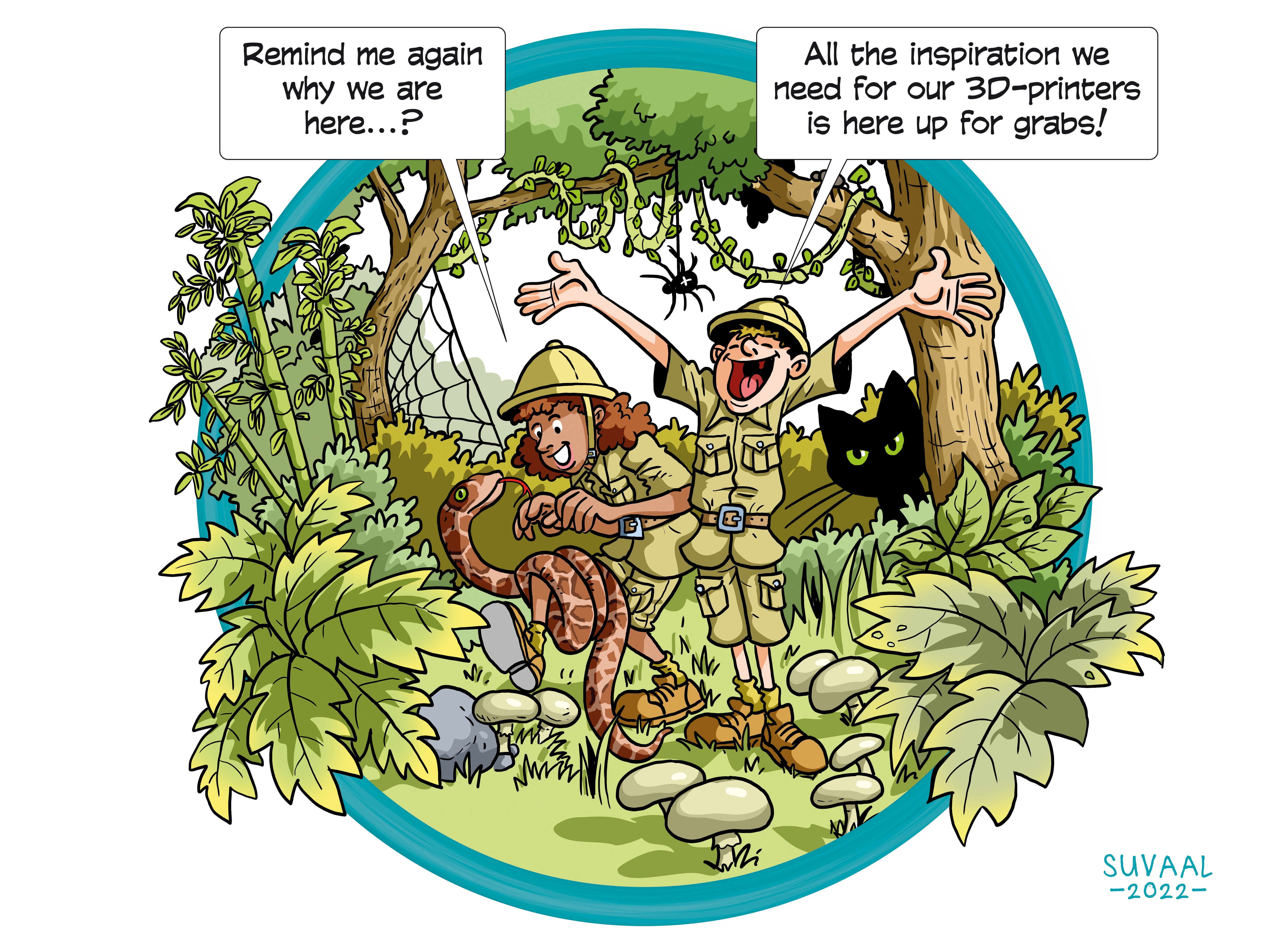Bio-inspired 3D printing using AI
Research Themes: Software Technology & Intellligent Systems


A TRL is a measure to indicate the matureness of a developing technology. When an innovative idea is discovered it is often not directly suitable for application. Usually such novel idea is subjected to further experimentation, testing and prototyping before it can be implemented. The image below shows how to read TRL’s to categorise the innovative ideas.
Summary of the project
The way in which we currently make composites materials is very energy intensive, and they are hard to recycle. Looking at Nature for inspiration, researchers have found that it uses very simple molecules can create materials exquisite and complex structures such as wood or bone – that combine reinforcing, porosity in addition to other functionalities such as sensing and adaptability. How natural materials use data on their environment to guide growth fascinates them. Using computational tools such as topology optimization, the researchers are able to determine what is the optimum geometry and placement of material for a new structure. Because it is difficult to create a reliable repeatable process during 3d printing, the team use data from different sensors to dynamically control the manufacturing process and adapt manufacturing on the fly. The challenge is to on the one hand understand the chemistry and molecular self-assembly of molecules and on the other hand to deal with the computational design tools and the engineering to being able to shape big structures and create interesting new materials that capture functionality and high-performance.
What's next?
For now we begin to capture and control some of the structural complexity of biological materials in our engineered sustainable 3D printed designs. However, there remain only few examples of materials that can serve engineering applications and capture the growth, sensing and adaptability of living materials. What if we could let these organisms do the hard work of structuring the material for us? They want to capture their bio-functionality inside the composite materials to create living composites. The idea for such material is that it will sense and adapt itself based on the use of the structure it is applies in.
With or Into AI?
Both
Dr. Kunal Masania
Faculties involved
- AE
